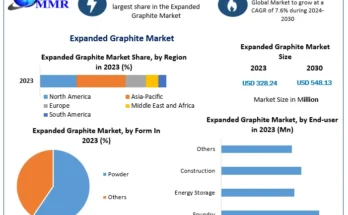Global Basic Chemicals Market has reached USD 665.28 billion by 2023 and is anticipated to project robust growth in the forecast period with a CAGR of 4.75% through 2029. Basic chemicals, also known as commodity chemicals, are typically produced in large quantities and play a crucial role in various industrial and consumer sectors. Inorganic chemicals, which lack a carbon-hydrogen bond, and organic chemicals, which contain a carbon-hydrogen bond, are the two main categories of chemicals.
Organic chemicals, such as acetic acid, ethanol, phenol, urea, benzene, ethylene, and methanol, find applications in vinegar production, pharmaceuticals, paints & adhesives, and descalers. On the other hand, inorganic chemicals are used in pigmentation, semiconductor manufacturing, fuel production, medicine, and the chemical industry.
The growing demand for a wide range of consumer goods has significantly contributed to the expansion of the chemical industry in both developed and developing economies. Basic chemicals serve as raw materials or intermediates in the manufacturing process of various products, further fueling the growth of the basic chemicals market. Additionally, the influx of foreign direct investment (FDI) in the chemical industry has bolstered the growth of the chemical manufacturing sector, where a diverse range of basic chemicals are utilized for product manufacturing.
For instance, according to a report published by the India Brands Equity Foundation, FDI inflows in the chemical sector reached USD 18.69 billion between April 2020 and June 2021. These factors collectively drive the demand for basic chemicals and contribute to the growth of the global basic chemicals industry.
Download FREE Sample Report @ https://www.techsciresearch.com/sample-report.aspx?cid=20981
However, it is important to note that exposure to certain chemicals can pose acute or long-term health hazards. Chemicals such as sulfuric acid, phosphoric acid, and nitric acid can be hazardous if the permissible exposure limit is exceeded. For instance, the Occupational Safety and Health Administration (OSHA) has set a legal airborne exposure limit of 1mg/m3 for an 8-hour work shift for sulfuric acid. Prolonged exposure to sulfuric acid can cause harm to the eyes, skin, teeth, and lungs. It is crucial to handle highly concentrated acids with care to avoid serious skin problems. These factors act as constraints on the growth of the basic chemicals market.
Key Market Drivers-Basic Chemicals Market
- Growing Demand for Basic Chemicals in the Pharmaceutical Industry
Basic chemicals, also known as commodity chemicals, are produced on a large scale and serve as vital starting materials for a wide range of products across various industries. These chemicals encompass both organic and inorganic compounds, including ethylene, propylene, sulfuric acid, and chlorine, among others.
Within the pharmaceutical industry, basic chemicals play a crucial role in drug formulation and production. They are employed at different stages of pharmaceutical manufacturing, starting from the synthesis of active ingredients to the creation of final dosage forms. The ongoing COVID-19 pandemic and other health crises have significantly underscored the importance of pharmaceuticals, consequently driving the demand for basic chemicals utilized in their production.
Moreover, the continuous advancements in pharmaceutical research and development are paving the way for the creation of innovative drugs and therapies. Consequently, this development is further fueling the need for basic chemicals to support the production of these novel pharmaceutical products.
Furthermore, the growth of the generic drugs market is another factor contributing to the rising demand for basic chemicals. As generic drugs are bioequivalent to their brand-name counterparts, they require the same basic chemicals for their production. This increased demand for basic chemicals within the pharmaceutical industry is not only shaping the global basic chemicals market but also stimulating manufacturers to innovate and expand their product offerings to cater to the specific needs of the pharmaceutical sector.
The convergence of these factors is significantly impacting the global basic chemicals market, driving its growth and propelling manufacturers to explore new avenues for product development and customization, all to meet the evolving demands of the pharmaceutical industry.
- Growing Demand of Basic Chemicals in Food & Beverage Industry
Basic chemicals, such as citric and acetic acid, play a critical and multifaceted role in the food and beverage industry. They are indispensable in every step of food processing, from preservation to packaging, ensuring the safety and quality of the final products.
For instance, acids like citric and acetic acid are not only used for pH adjustment but also as natural preservatives, extending the shelf life of various food items. These acids effectively inhibit the growth of harmful microorganisms, keeping the food fresh and safe for consumption.
Moreover, additives derived from basic chemicals serve as versatile ingredients that enhance the sensory attributes of food products. These additives contribute to the appealing flavors, vibrant colors, and delightful textures that consumers crave. They bring out the best in culinary creations, making them more enticing and enjoyable.
Urbanization and changing consumer lifestyles have significantly impacted the food industry, leading to a growing preference for ready-to-eat and processed foods. These convenient food options heavily rely on the utilization of basic chemicals for their production. Basic chemicals enable the efficient manufacturing and mass production of these food products, meeting the demands of modern consumers.
Stricter food safety regulations imposed worldwide have compelled food manufacturers to prioritize the use of approved chemicals in their production processes. These regulations ensure that the food products meet stringent safety standards and are free from harmful contaminants. By adhering to these regulations, manufacturers can provide consumers with safe and trustworthy food choices.
The rising demand for basic chemicals in the food and beverage industry has a profound impact on the global basic chemicals market. This demand not only fuels the growth of the market but also serves as a driving force for manufacturers to innovate and expand their product offerings. Manufacturers strive to develop new and improved basic chemicals that cater specifically to the unique needs and requirements of the food and beverage industry. This constant innovation ensures that the industry remains at the forefront of technological advancements and provides consumers with safer, tastier, and more diverse food options.
Key Market Players-Basic Chemicals Market
- Borealis AG
- BASF SE
- Eastman Chemical Company
- Ineos Group Ltd
- Tokyo Chemical Industry Co. Ltd.
- Mitsubishi Chemical Corporation
- Solvay SA
- Shin-Etsu Chemical Co. Ltd.
- Sumitomo Chemical Co. Ltd.
- LyondellBasell Industries Holdings B.V.
Download FREE Sample Report @ https://www.techsciresearch.com/sample-report.aspx?cid=20981
Key Market Challenges-Basic Chemicals Market
- Volatility in Price of Raw Materials
Basic chemicals also referred to as commodity chemicals, are produced in large quantities and serve as crucial starting materials for a wide range of products across diverse industries. These chemicals encompass both organic and inorganic compounds, including ethylene, propylene, sulfuric acid, and chlorine1.
To facilitate the production of basic chemicals, a diverse array of raw materials is required, such as crude oil, natural gas, minerals, and metals. However, the prices of these raw materials are subject to frequent fluctuations influenced by various factors, including geopolitical tensions, disruptions in the supply chain, shifts in demand and supply dynamics, and changes in regulatory policies.
The volatility in raw material prices poses a significant challenge for chemical manufacturers. Not only does it impact their production costs, but it also creates uncertainties surrounding profit margins, making it challenging for companies to plan and make informed strategic decisions.
The fluctuations in raw material prices can result in increased production costs, which may eventually be passed on to consumers, potentially affecting market demand and consumer behavior.
Furthermore, price volatility in raw materials can cause disruptions in the supply chain, leading to delays or even cancellations of orders, thereby impacting the overall market dynamics.
You may also read:
Petrochemicals Market [2029] – Analysis, Trends, & Insights
Consumer Foam Market Analysis, Development [2029], Key Terms
[Latest] Saccharin Market Size, Demand & Growth Report
India Ethanol Market – Trends, Share [Latest] & Forecast
Table of Content-Basic Chemicals Market
- Product Overview
1.1. Market Definition
1.2. Scope of the Market
1.2.1. Markets Covered
1.2.2. Years Considered for Study
1.2.3. Key Market Segmentations
- Research Methodology
2.1. Objective of the Study
2.2. Baseline Methodology
2.3. Key Industry Partners
2.4. Major Association and Secondary Applications
2.5. Forecasting Methodology
2.6. Data Triangulation & Validation
2.7. Assumptions and Limitations
- Executive Summary
3.1. Overview of the Market
3.2. Overview of Key Market Segmentations
3.3. Overview of Key Market Players
3.4. Overview of Key Regions/Countries
3.5. Overview of Market Drivers, Challenges, Trends
- Impact of COVID-19 on Global Basic Chemicals Market
- Global Basic Chemicals Market Outlook
5.1. Market Size & Forecast
5.1.1. By Value
5.2. Market Share & Forecast
5.2.1. By Type (Organic Ammonia, Chlorine, Sodium Hydroxide, Inorganic Benzene, Ethylene, Propylene, Others)
5.2.2. By End User (Chemical Industry, Pharmaceuticals, Food & Beverages, Polymer, Pulp & Paper, Textiles, Others)
5.2.3. By Region
5.2.4. By Company (2023)
5.3. Market Map
- Asia Pacific Basic Chemicals Market Outlook
6.1. Market Size & Forecast
6.1.1. By Value
6.2. Market Share & Forecast
6.2.1. By Type
6.2.2. By End User
6.2.3. By Country
6.3. Asia Pacific: Country Analysis
6.3.1. China Basic Chemicals Market Outlook
6.3.1.1. Market Size & Forecast
6.3.1.1.1. By Value
6.3.1.2. Market Share & Forecast
6.3.1.2.1. By Type
6.3.1.2.2. By End User
6.3.2. India Basic Chemicals Market Outlook
6.3.2.1. Market Size & Forecast
6.3.2.1.1. By Value
6.3.2.2. Market Share & Forecast
6.3.2.2.1. By Type
6.3.2.2.2. By End User
6.3.3. Australia Basic Chemicals Market Outlook
6.3.3.1. Market Size & Forecast
6.3.3.1.1. By Value
6.3.3.2. Market Share & Forecast
6.3.3.2.1. By Type
6.3.3.2.2. By End User
6.3.4. Japan Basic Chemicals Market Outlook
6.3.4.1. Market Size & Forecast
6.3.4.1.1. By Value
6.3.4.2. Market Share & Forecast
6.3.4.2.1. By Type
6.3.4.2.2. By End User
6.3.5. South Korea Basic Chemicals Market Outlook
6.3.5.1. Market Size & Forecast
6.3.5.1.1. By Value
6.3.5.2. Market Share & Forecast
6.3.5.2.1. By Type
6.3.5.2.2. By End User



